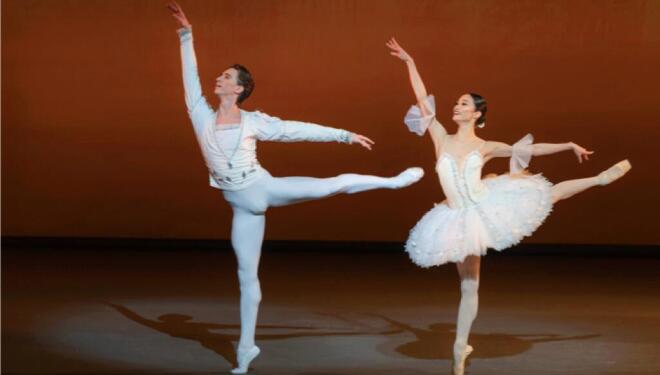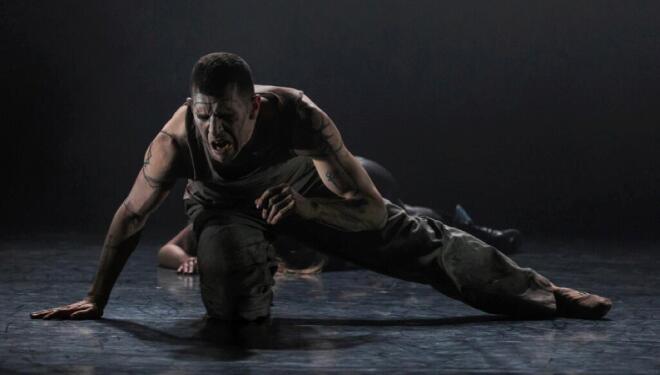Ballet Nights: A New Way of Seeing Dance?
Ballet Nights aims to forge a new connection between audience and dancers. To find out exactly how, Culture Whisper spoke to its founder and artistic director, Jamiel Devernay-Laurence


Jamiel Devernay-Laurence, Artistic Director of Ballet Nights. Photo: Sian Trenberth
The former Scottish Ballet dancer, now a 34-year-old go-getting entrepreneur, is intent on radically changing the way in which we relate to dance and in doing so, attracting new audiences. To that end, he’s devised a show concept based on short dance pieces, both classical and new, performed by a combination of ballet stars and younger dancers, each introduced by himself in a compère role, in a small venue where the audience is extremely close to the dancers. Cherry on the cake: after the show audience members get the opportunity to meet and talk to the dancers.
He called it Ballet Nights.
‘Once I finished dancing and people started coming back to theatre after the pandemic, I was being invited to a lot of shows and at these shows I was very surprised at the format for an audience. I think some of these bigger venues can be quite daunting, and although they do what they can to be inviting, I found intervals quite rushed, I found discussions quite empty; I think a lack of information about what you’re seeing and who you’re seeing can mean that for those who are new to dance it might be their only experience, and right now we need audiences that return again and again.
‘So, for me, when I do Ballet Nights, there has to be me welcoming people on arrival, there has to be someone on stage introducing what you’re seeing, who you’re seeing and what they’re doing next. And then after the show I wanted audiences meeting these artists. As a dancer, I always felt super-lucky if I could meet the audience, which wasn’t always the case.’
Devernay-Laurence set his Ballet Nights in the intimate surroundings of the 240-seater Lanterns StudioTheatre in Canary Wharf.

Lanterns Studio Theatre. Photo courtesy of Lanterns
Truth to tell, even in such a small space not all nightlines are perfect, but Devernay-Laurence points out,
‘The thing about Lanterns that’s great is that even the furthest back seat is still only metres from the action and so we’re really leaning to the up-close intimacy of this event in London.’
Ballet Nights has been going for three years now, with Autumn and Spring outings, each programme performed over two or three nights. Who’s been coming to see it?
‘One of the interesting pieces of feedback we’ve had is, there’s so many people here, older, younger, new, established… and I think having a show that everyone can appreciate, that’s the recipe for success. My commissioning goals as a director have always been, what are you going to say, and I think Ballet Nights is saying, look at all this fantastic talent; secondly, if the audience are going to pay to see a show they should feel like it’s been made for them, that they are included.’
There’s no doubting the talent on offer: the coming edition of Ballet Nights is led by The Royal Ballet stars Yasmine Naghdi and Reece Clarke (pictured top), and includes a new piece by Joshua Junker, the young Royal Ballet dancer and choreographer who garnered enthusiastic praise for his work for the recent ROH Festival of New Choreography, as well as up-and-coming contemporary dancer and choreographer Jordan James Bridge.

Jordan James Bridge in 'So The Rhythm Goes' at Ballet Nights. Photo: Deborah Jaffe\
In order to develop a brand with strong appeal to a potential audience Devernay-Laurence uses social media, of course, as well as harnessing all the potential of new technology, such as AI; but he’s gone beyond that and emulated the marketing techniques of sectors that at first sight appear to bear no relation at all to dance.
‘I’m actually looking at Formula 1, I’m looking at Premier League Football, I’m looking at the way Netflix leveraged a story, such as their series Drive to Survive that has now led to grandmothers in Sussex worrying about tyre degradation…’
He likes what he calls ‘the pop up’ feel of Ballet Nights, the idea that it’s presenting things that happen only once, and he gives the example of The Royal Ballet’s Ryoichi Hirano, who danced in Ballet Nights on his 40th birthday.
But, wait, there’s more!
‘Jonzi D is known for the Breakin’ Convention, but not many people know what a fantastic poet he is, and I always wanted to combine his poetry with a new work; and it just so happens he has always wanted to work with an artist like [Royal Ballet principal] Steven McRae.’
Watch this space.
Another particularity of Ballet Nights is that each half of the programme starts with a piano piece played by Lanterns resident pianist Viktor Erik Emanuel.

Viktor Erik Emanuel, pianist for Ballet Nigjhts
‘Many people buy a ticket just to see Viktor and the dance becomes a bonus, which is really interesting. He has many students, he’s also a coach for many professional players and they bought those tickets to see him play works that they have aspirations to play themselves.
‘And we do have a Yamaha C111 that Elton John and Yamaha Europe gifted to the venue, so it would be a shame to waste it.’
As if London didn’t pose enough of a challenge, Devernay-Laurence already has plans to go international.
‘If audiences in Finland, if audiences in Dubai, if audiences in Malaysia want to see this show, you want to make it happen. We have ambitions to take the show global.’
Even with relatively steep ticket prices (£60-125) Ballet Nights cannot be self-financing. At the moment, it has one investor, about which Devernay-Laurence is a little cagey; but the future plan is to use the Angels investment model, widespread in musical theatre and beyond.
‘Not many people remember that Matthew Bourne’s Swan Lake is the result of Angel investment; and I see Matthew Bourne as a huge inspiration for being able to take that investment and create a show that audiences really wanted to see.’
Ballet Nights is on at Lanterns Studio Theatre on 23 and 24 February at 19:30



